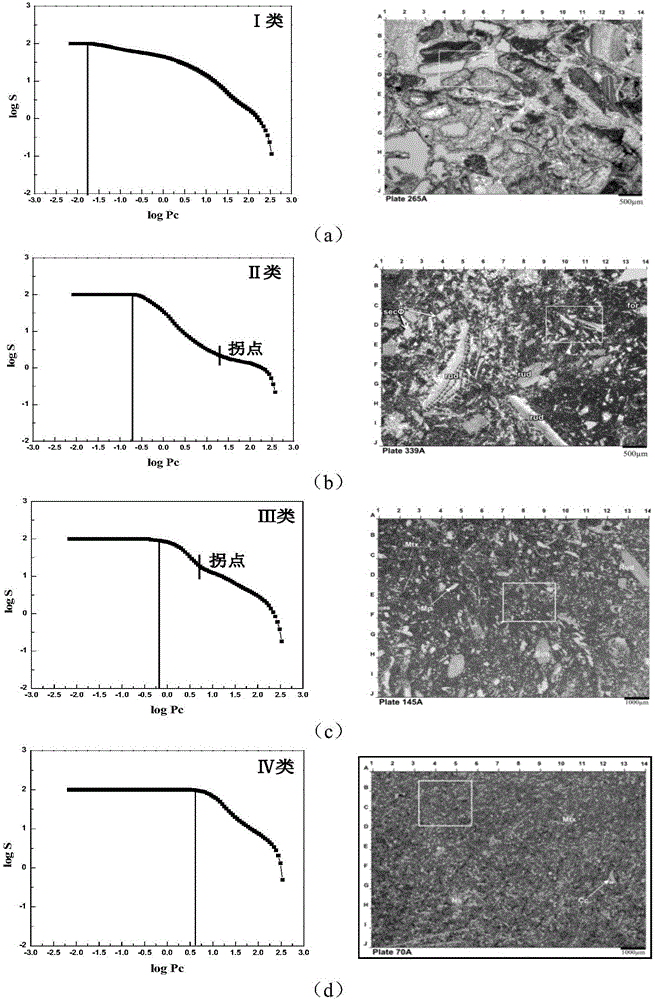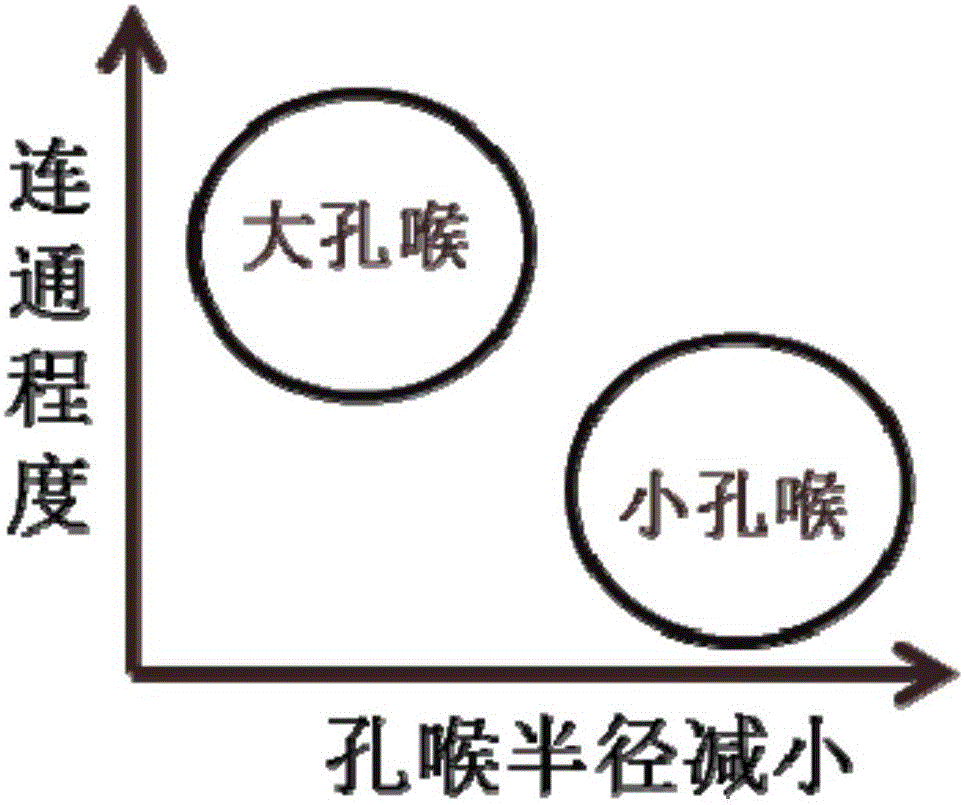Method for classifying bioclastic limestone reservoir pore structures
A technology of pore structure and biodebris, which is applied in the analysis of suspensions and porous materials, analytical materials, permeability/surface area analysis, etc. Quantitative evaluation and other issues
- Summary
- Abstract
- Description
- Claims
- Application Information
AI Technical Summary
Problems solved by technology
Method used
Image
Examples
Embodiment Construction
[0026] Such as figure 1 Shown, a bioclastic limestone reservoir pore structure classification method, including the following steps:
[0027] a Carry out nuclear magnetic logging, conventional logging and drilling coring for the target well section in the study block.
[0028] b. Carry out matching high-pressure mercury injection experiment and nuclear magnetic experiment on the rock core obtained in step a. The so-called matching refers to carrying out both high-pressure mercury injection experiment and nuclear magnetic experiment on the same rock core.
[0029] c according to image 3 As shown, the abscissa of the capillary force curve is the mercury entry pressure Pc, which represents the radius of the pore throat, and the ordinate is the saturation S of the non-wetting phase fluid, reflecting the connectivity of the pore throat. The curve at the upper left represents the better connectivity. The large pore-throat section, located in the lower right, represents the small ...
PUM
 Login to View More
Login to View More Abstract
Description
Claims
Application Information
 Login to View More
Login to View More - R&D
- Intellectual Property
- Life Sciences
- Materials
- Tech Scout
- Unparalleled Data Quality
- Higher Quality Content
- 60% Fewer Hallucinations
Browse by: Latest US Patents, China's latest patents, Technical Efficacy Thesaurus, Application Domain, Technology Topic, Popular Technical Reports.
© 2025 PatSnap. All rights reserved.Legal|Privacy policy|Modern Slavery Act Transparency Statement|Sitemap|About US| Contact US: help@patsnap.com



